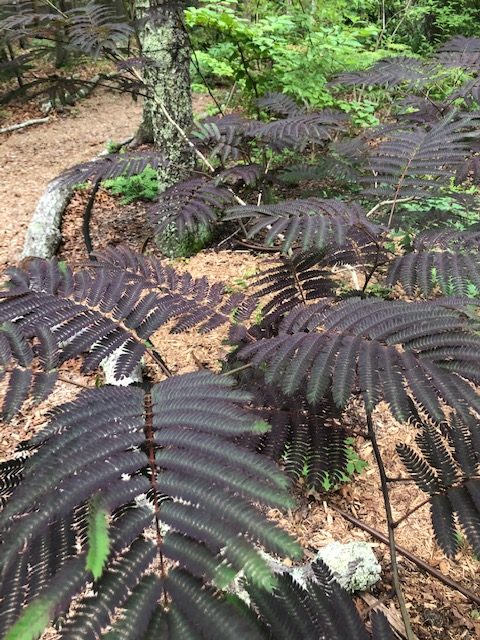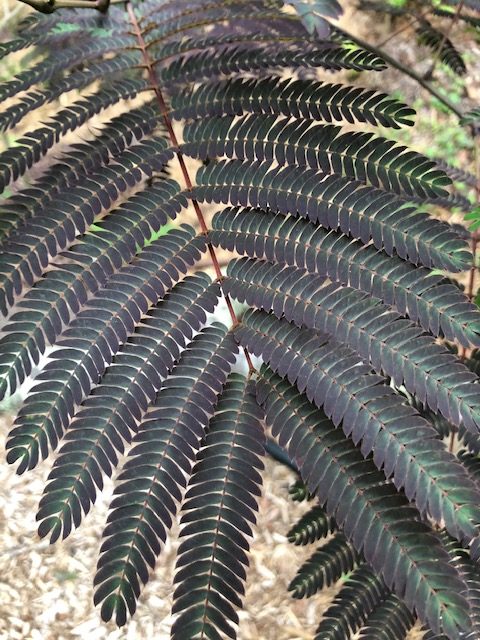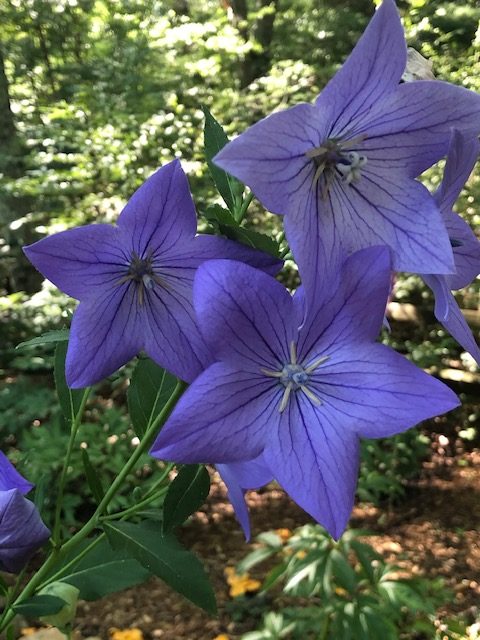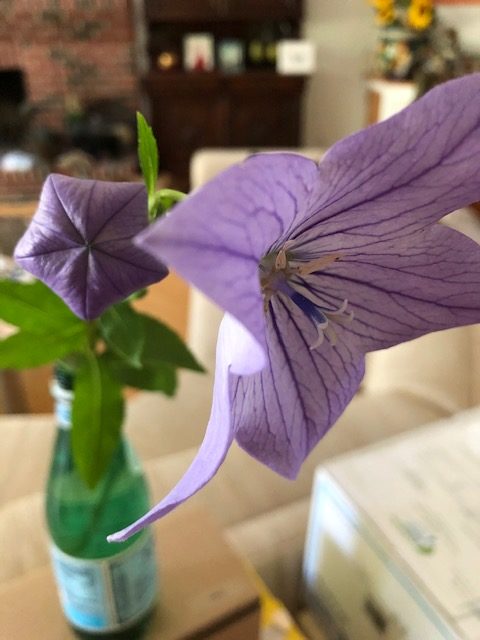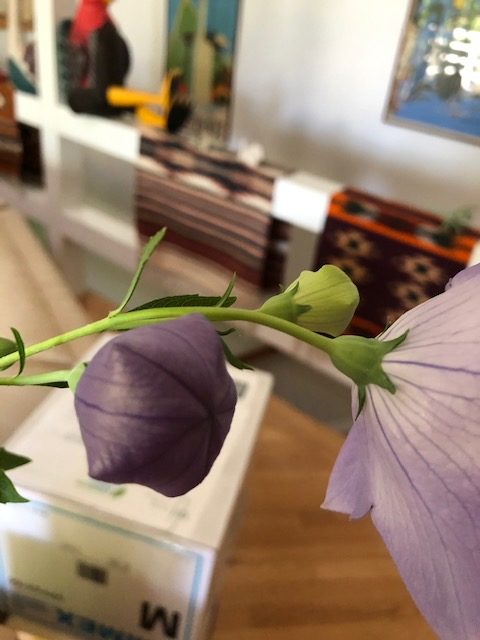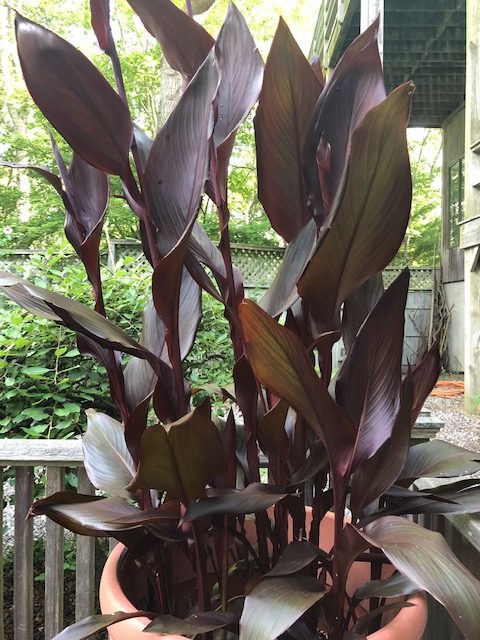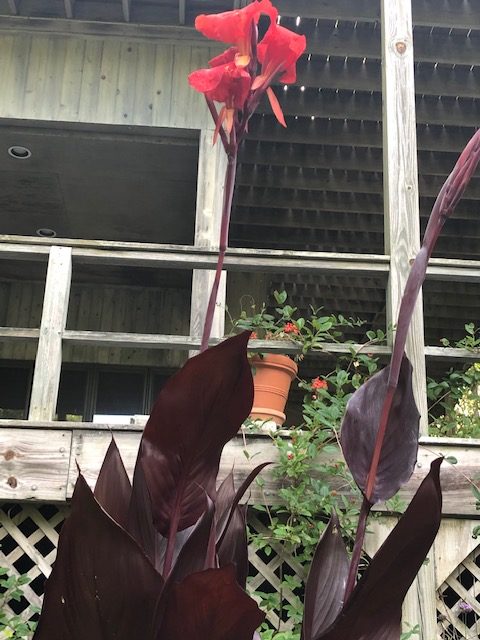“One of the secrets of a happy life is continuous small treats,” said the late British author, Iris Murdoch. Since the pandemic turned our lives upside down, taking time to savor the good moments makes a lot of sense. Consider seeking comfort in the garden with the following plants — joyful “small treats” that flourish despite summer’s oppressive heat and humidity:
Albizia julibrissin ‘Summer Chocolate’ (Mimosa Tree) Z 6-9.
I am enamored of the dark purple, fern-like foliage of A. julibrissin ‘Summer Chocolate’, an awesome hybrid Mimosa tree. Malevolent voles killed the first tree I planted in the garden. A pox on them! They ate the roots when the tree was well-established and in bloom. I planted the current tree — shown above — four years ago with sharp-stone vole-repellent. (See post of April 2, 2012: “Hot Tips: Vole Damage Protection”.) So far, so good.
In the early Spring, don’t panic if your tree looks dead. It leafs out late. And the new foliage will be green — but don’t despair, it will change to purple. The tree just likes to fool with us. Summer Chocolate does well in sun or part shade, in well-drained acid or sweet soil. Late-summer pink flowers will attract butterflies. An additional “small treat.”
Platycodon grandiflorus (Balloon Flower) Z 3-9
Balloon flower is a summer-flowering, disease-resistant, pest-resistant, long-lived perennial. It is aptly named for its delightful, puffy flower buds. The plants grow in clumps on sturdy stems to about 2 feet and produce flowers in clusters. While I occasionally cut flowers for the house, in the garden I don’t remove the faded flowers or their resulting seed pods. Therefore, I’m gifted with lots of volunteer plants. Yet, be aware: If you want continuous bloom all summer long, regular deadheading is essential.
My plants thrive in organically rich, well-drained acid soil in shade. Choose the planting site carefully. Platycodon grandiflorus has a chunky, fleshy, root system, which — much like the Magnolia — resents disturbance. In Asia, people eat the roots, which are thought to have anti-inflammatory/digestive benefits. Not to everyone’s taste, though.
Canna ‘Australia’ (Canna Lily) Z 9-10
Canna Lilies are tropical, rhizomatous perennials that love heat, humidity, and lots of water. C. ‘Australia’ with its showy black-purple foliage, and vibrant red-orange flowers that attract hummingbirds, is an easy-care Summer/Fall superstar.
I grow my Cannas in large pots. After the first frost, I remove the dead foliage and stems and then winter store the pots in my unheated basement. I ignore them until late May when I bring them outside. Once the plants are watered and fertilized they quickly grow to full size. I’ve been doing this for almost 20 years. Never lost a plant. And when you plant in pots, voles aren’t a problem. An added bonus.
Be well. Stay safe.
